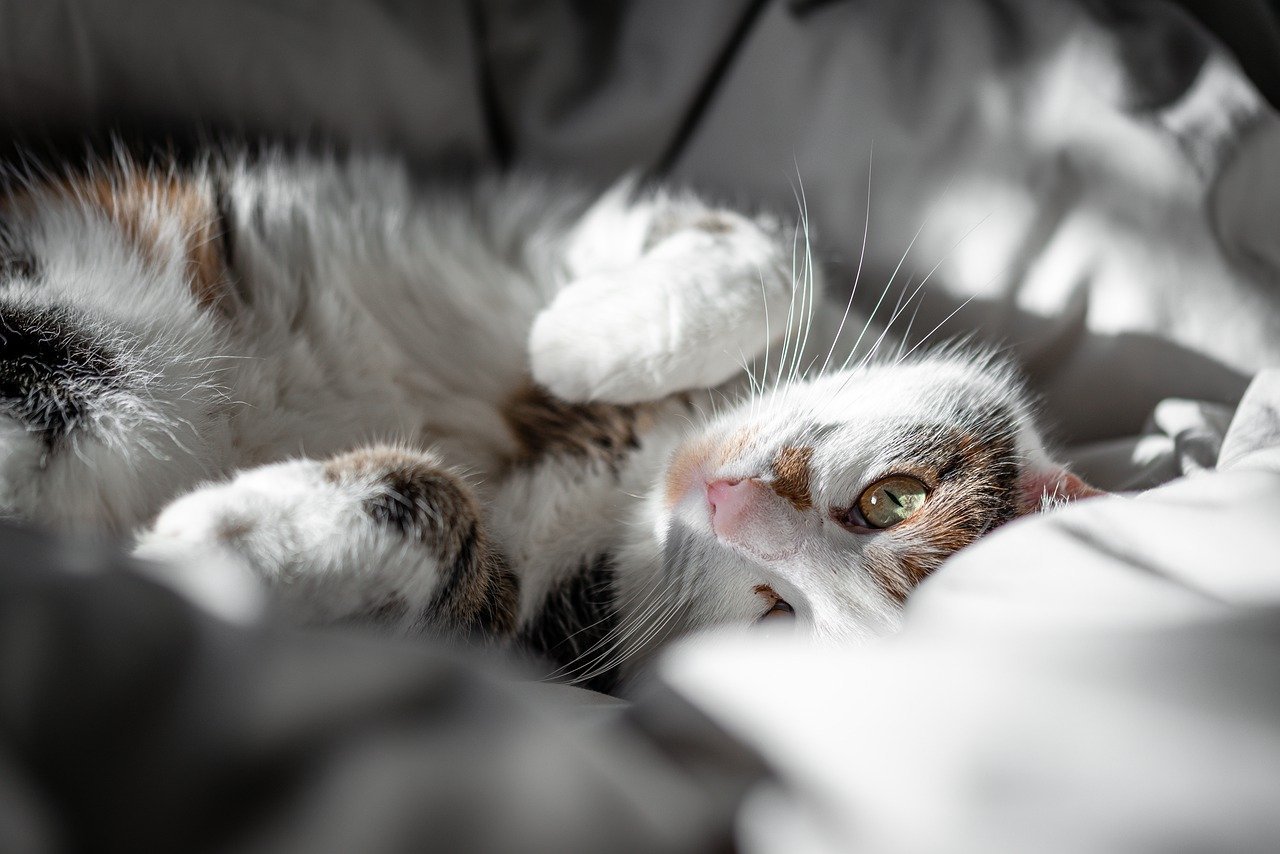Cats naturally scratch surfaces to sharpen their claws, mark their territory, and stretch their muscles. While scratching is a normal behavior for cats, it can be destructive when they target furniture, carpets, or other household items. Instead of punishing your cat for scratching, it’s important to understand the behavior and implement strategies to redirect it to appropriate outlets. This comprehensive guide provides effective tips and strategies to stop your cat from scratching furniture and maintain a harmonious home environment.
Understanding Why Cats Scratch
To effectively address scratching behavior, it’s crucial to understand why cats scratch in the first place:
- Sharpening Claws: Scratching helps cats remove the outer layer of their claws, keeping them sharp and healthy.
- Marking Territory: Cats have scent glands in their paws. When they scratch, they leave both a visual and scent mark, which helps them establish their territory.
- Stretching Muscles: Scratching allows cats to stretch their muscles, tendons, and ligaments, promoting physical health.
- Relieving Stress: Scratching can be a way for cats to relieve stress, frustration, or boredom.
Preventive Measures to Stop Furniture Scratching
Implementing preventive measures can help minimize the damage to your furniture and encourage your cat to scratch appropriate surfaces.
1. Provide Scratching Posts and Pads
Offering appropriate outlets for scratching is key to redirecting your cat’s behavior. Scratching posts and pads come in various shapes, sizes, and materials. Here’s how to choose and use them effectively:
- Variety of Textures: Cats have individual preferences, so provide a variety of scratching surfaces such as sisal, carpet, and cardboard.
- Vertical and Horizontal Options: Some cats prefer vertical scratching posts, while others prefer horizontal pads. Offering both can satisfy your cat’s needs.
- Sturdy and Stable: Ensure that the scratching post is tall enough for your cat to stretch fully and stable enough to withstand vigorous scratching.
- Strategic Placement: Place scratching posts near areas where your cat likes to scratch, such as near furniture or their favorite resting spots. You can also put them in high-traffic areas to encourage use.
2. Use Catnip and Attractants
Catnip and other attractants can entice your cat to use the scratching post instead of furniture. Sprinkle catnip on the scratching post or use attractant sprays to make the post more appealing.
3. Cover Furniture
Protect your furniture by covering it with materials that are less appealing for scratching:
- Furniture Covers: Use slipcovers or throws to protect the surfaces of your furniture.
- Double-Sided Tape: Apply double-sided tape to areas where your cat likes to scratch. Cats dislike the sticky sensation, which can deter them from scratching.
- Aluminum Foil or Plastic: Covering furniture with aluminum foil or plastic sheets can deter scratching due to the texture and sound.
4. Regular Nail Trimming
Keeping your cat’s claws trimmed can reduce the damage caused by scratching. Regular nail trimming helps prevent claws from becoming too sharp and reduces the risk of injury. Here are some tips for trimming your cat’s nails:
- Start Slowly: If your cat is not accustomed to nail trimming, start slowly by handling their paws and gradually introducing the nail clippers.
- Use Proper Tools: Use cat-specific nail clippers or grinders for safe and effective trimming.
- Reward and Praise: Reward your cat with treats and praise after each successful nail trimming session to create a positive association.
Behavioral Training and Positive Reinforcement
Training your cat to scratch appropriate surfaces involves patience, consistency, and positive reinforcement.
1. Redirect Scratching Behavior
When you catch your cat scratching furniture, calmly redirect them to the scratching post. Avoid yelling or scolding, as this can cause stress and anxiety.
- Clap Your Hands: A gentle clap can interrupt the behavior without frightening your cat.
- Carry to Scratching Post: Gently pick up your cat and place them next to the scratching post. Encourage them to scratch the post by using catnip or toys.
2. Reward Good Behavior
Positive reinforcement is crucial in encouraging your cat to use scratching posts and pads. Reward your cat with treats, praise, or playtime whenever they scratch appropriate surfaces.
- Treats: Offer a treat immediately after your cat uses the scratching post.
- Praise: Use a gentle and encouraging tone to praise your cat for good behavior.
- Playtime: Engage your cat in playtime near the scratching post to create positive associations.
3. Create a Positive Environment
Ensuring your cat feels secure and comfortable in their environment can reduce stress-related scratching:
- Safe Spaces: Provide cozy and secure spaces where your cat can retreat and feel safe.
- Interactive Toys: Use interactive toys to keep your cat mentally and physically stimulated, reducing boredom and stress.
- Routine: Maintain a consistent daily routine for feeding, playtime, and grooming to provide a sense of security.
Additional Tips and Tricks
Here are some additional tips and tricks to help stop your cat from scratching furniture and maintain a harmonious home:
1. Use Deterrent Sprays
Deterrent sprays are formulated with scents that cats find unpleasant. Spraying these deterrents on furniture can discourage scratching. Ensure the spray is safe for both cats and the fabric of your furniture.
2. Provide Enrichment and Stimulation
Cats need mental and physical stimulation to prevent boredom and stress. Provide plenty of enrichment activities:
- Climbing Structures: Cat trees and shelves offer vertical space for climbing and scratching.
- Interactive Toys: Puzzle toys, feather wands, and laser pointers can keep your cat engaged and reduce the urge to scratch furniture.
- Window Perches: Cats enjoy watching the outside world. A window perch can provide hours of entertainment and reduce stress.
3. Regularly Rotate Scratching Posts
Cats can become bored with the same scratching post over time. Regularly rotate or introduce new scratching posts and pads to keep your cat interested and engaged.
4. Consult a Veterinarian or Behaviorist
If your cat’s scratching behavior persists despite your efforts, consult a veterinarian or a feline behaviorist. There may be underlying medical or behavioral issues that need to be addressed.
Long-Term Solutions and Maintenance
Maintaining a scratch-free home requires ongoing effort and attention. Here are some long-term solutions and maintenance tips:
1. Continue Positive Reinforcement
Consistently reward your cat for using appropriate scratching surfaces. Positive reinforcement helps reinforce good behavior and ensures your cat continues to use scratching posts and pads.
2. Monitor and Adjust
Regularly monitor your cat’s behavior and adjust your strategies as needed. If you notice your cat losing interest in their scratching post, try introducing new textures, shapes, or locations.
3. Maintain a Clean and Inviting Environment
Keep your home clean and free of stressors that may contribute to undesirable scratching behavior. Regularly clean litter boxes, provide fresh water, and ensure your cat’s living space is comfortable and inviting.
Conclusion
Stopping your cat from scratching furniture requires understanding, patience, and consistency. By providing appropriate scratching outlets, using positive reinforcement, and maintaining a stimulating environment, you can redirect your cat’s natural behavior to acceptable surfaces. Remember, scratching is a normal and healthy activity for cats, and with the right strategies, you can protect your furniture while ensuring your feline friend remains happy and healthy.
Discover more from EMMOCEB
Subscribe to get the latest posts sent to your email.






